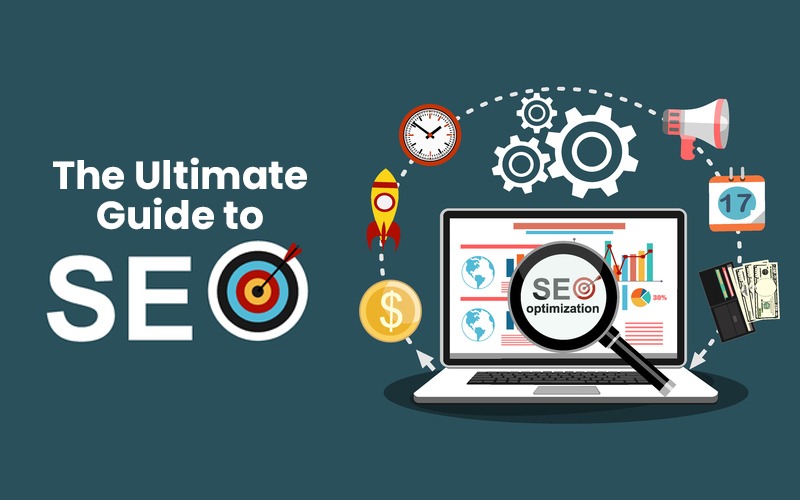Introduction
SEO (Search Engine Optimization) is the backbone of online visibility. Whether you're a business owner, blogger, or digital marketer, mastering SEO can mean the difference between ranking on the first page of Google or being buried under thousands of search results. But what exactly is SEO, and why is it so crucial for digital success? Let’s break it down.
What Is SEO?
SEO is the process of optimizing websites to rank higher on search engines like Google. It involves various techniques, including keyword research, content optimization, technical improvements, and link building. The ultimate goal? To drive organic traffic and improve website visibility.
Want a deeper understanding? Check out this comprehensive guide on What is SEO to explore its core principles.
Why SEO Matters in Digital Marketing
The majority of online experiences begin with a search engine. If your website isn’t optimized, you’re missing out on valuable traffic and potential customers. Here’s why SEO is essential:
- Increases visibility – Higher rankings mean more exposure.
- Boosts credibility – Users trust websites that appear on the first page.
- Drives organic traffic – No need to rely solely on paid ads.
- Enhances user experience – A well-optimized site improves navigation and speed.
How Search Engines Work
Search engines like Google use crawlers to scan and index web pages. They analyze content, links, and technical factors to determine rankings. The process involves:
- Crawling – Bots discover new and updated pages.
- Indexing – Pages are stored in a massive database.
- Ranking – Google determines the best results based on 200+ factors.
The Three Pillars of SEO
SEO consists of three main components:
1. On-Page SEO
Focuses on optimizing content and HTML elements on your site.
2. Off-Page SEO
Includes external factors like backlinks and social signals.
3. Technical SEO
Ensures website performance, speed, and security meet best practices.
On-Page SEO: Optimizing Content for Search Engines
On-page SEO involves:
- Using relevant keywords naturally.
- Crafting compelling meta titles and descriptions.
- Structuring content with H1, H2, and H3 headings.
- Improving internal linking to enhance user navigation.
Off-Page SEO: Building Authority and Trust
Google considers off-page factors when ranking websites. The most important one? Backlinks. These are links from other sites pointing to yours, acting as "votes of confidence."
Other off-page SEO tactics include:
- Guest posting to earn backlinks.
- Social media marketing to boost engagement.
- Influencer outreach to expand reach.
Technical SEO: Enhancing Website Performance
A slow, unresponsive website can hurt your rankings. Key technical SEO elements include:
✅ Mobile-friendliness – A responsive site adapts to any device.
✅ Page speed optimization – Faster websites reduce bounce rates.
✅ SSL security – A secure (HTTPS) site builds trust.
✅ XML sitemaps – Helps search engines crawl and index your pages.
Keyword Research: The Foundation of SEO
Choosing the right keywords is crucial for ranking success. Here’s how to find them:
- Use tools like Google Keyword Planner or Ahrefs.
- Analyze search intent (informational, navigational, transactional).
- Target long-tail keywords for better conversion rates.
SEO Strategies for 2025
SEO is constantly evolving. Here’s what to focus on in 2025:
- AI-driven content optimization – Google’s algorithms prioritize user-focused content.
- Voice search – Optimize for conversational keywords.
- E-E-A-T (Experience, Expertise, Authority, Trust) – High-quality content is key.
- Video SEO – Google ranks video content higher.
Common SEO Mistakes to Avoid
🚫 Keyword stuffing – Overloading content with keywords leads to penalties.
🚫 Ignoring mobile optimization – Most users browse on mobile devices.
🚫 Skipping meta descriptions – These improve click-through rates.
🚫 Buying backlinks – Google penalizes unnatural link-building strategies.
The Role of Backlinks in SEO
Backlinks remain a crucial ranking factor. High-quality links from authoritative sites can boost your rankings significantly. Focus on:
- Earning natural backlinks through valuable content.
- Using guest blogging to reach new audiences.
- Engaging in industry collaborations for link-building opportunities.
Measuring SEO Success: Important Metrics
Tracking progress is essential for improving SEO efforts. Key performance indicators (KPIs) include:
📈 Organic traffic – The number of visitors from search engines.
📈 Bounce rate – How quickly users leave your site.
📈 Keyword rankings – Your position in search results.
📈 Domain authority – A score predicting site ranking potential.
Future Trends in SEO
What’s next for SEO? Here’s a glimpse:
🔹 AI-generated content – Google’s algorithm favors natural, human-like writing.
🔹 Augmented reality (AR) search – Users engage with 3D product previews.
🔹 Zero-click searches – Featured snippets provide instant answers.
Final Thoughts
SEO is not a one-time effort—it’s an ongoing process. By focusing on content quality, technical improvements, and link-building, you can boost your site’s rankings and attract more traffic. Want to dive deeper into SEO fundamentals? Check out What is SEO for expert insights.
FAQs
1. How long does it take to see SEO results?
SEO is a long-term strategy. Results can take anywhere from 3 to 6 months, depending on competition and industry.
2. Is SEO better than paid ads?
SEO provides long-lasting, organic traffic, whereas paid ads offer immediate but temporary visibility.
3. What’s the best SEO tool for beginners?
Tools like Google Search Console, Ahrefs, and SEMrush help track rankings and keyword data.
4. Can social media impact SEO?
Yes! Social signals like shares, likes, and engagement can indirectly improve rankings.
5. Does voice search affect SEO?
Absolutely! Optimizing for conversational, long-tail keywords enhances voice search visibility.

